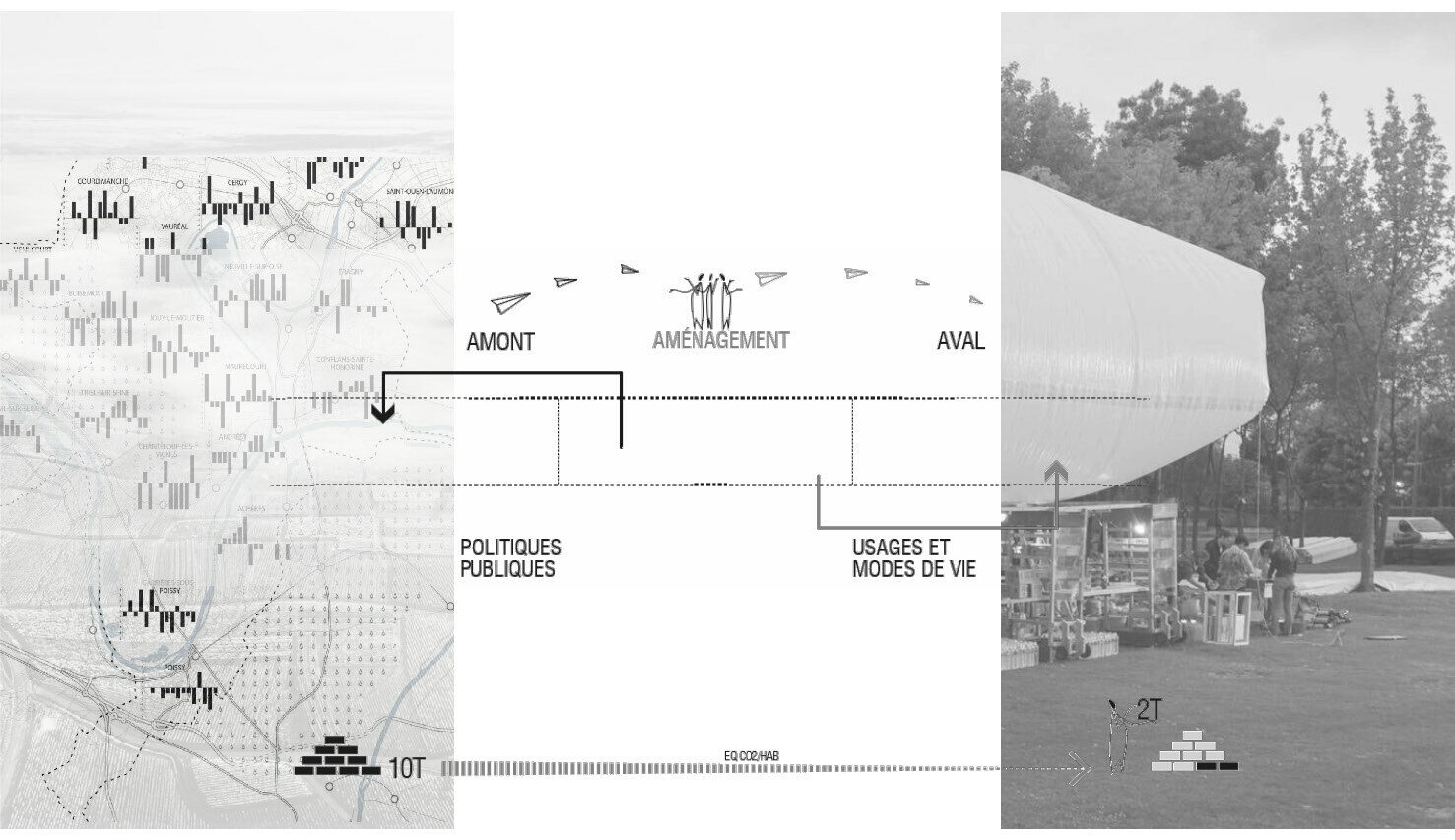The Built Footprint
Narrative

The average carbon footprint of a French citizen in 2023 was estimated to be 10 tons of CO2. Based on IPCC scenarios, our goal is to reduce the average footprint to two tons by 2050. In other words, a fivefold reduction, which would require society to make a radical change.
As actors in the urban space, what levers for action are available to us? We only act on the physical environment, i.e., to put it more simply, on about one-third of this carbon footprint—depending, of course, on our geographical location, the value of carbon-fueled or low-carbon mobility according to the public transport network, etc., but this is a conceptual approach. In practice, we act on the physical environment by influencing both the design of buildings and the energy choices we make in terms of supply.
We are currently achieving carbon reductions of around 25-30% on our operations. Assuming that we can make a 50% gain on our one-third, we achieve a reduction of just 17.5%. Rounding up to 20%, this means that 80% of emissions are not directly addressed by the physical environment and are beyond our control. Yet to go from 10 to 2 tons of CO2, we need to achieve an 80% gain... But that doesn’t mean we should sit back and do nothing. On the contrary, as urban actors, we must do everything we can to hit this 20% target. But at the same time, we also need to look at the levers we can activate to go after the other 80%. In other words, considering the capacity of the residents of the places we design to get involved, and encouraging them to be the agents of their own transition. So we need to think of urban infrastructure and housing as platforms for promoting a transition.
There are two ways of doing this. If the middle third of the carbon footprint corresponds to the physical environment, the downstream third corresponds to uses, behaviors, lifestyles, diet, etc. It goes without saying that we cannot build habitable districts that would only be accessible to folks who agree not to travel by plane, eat meat, or switch phones every year. While our role is not to dictate behavior, we can encourage behavior that is favorable to decarbonization, and give people the opportunity to consume differently, travel differently, work differently. We are actors in the material world, but we need to do as much as we can on the immaterial as a vector for change and transition.
And we can also try to address the upstream third, which encompasses major national and international public policy decisions. How can we conceive each of our programs as demonstrators and drivers? If we hope to influence national decisions, public policies, and regulations, we need to lead by example.